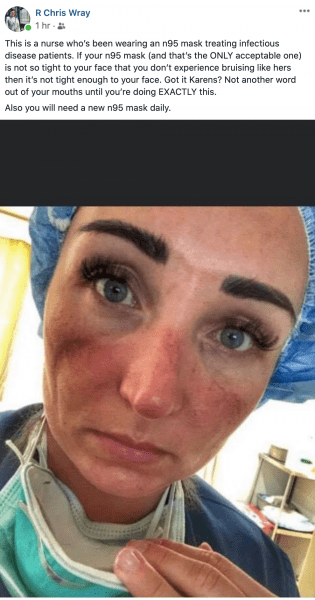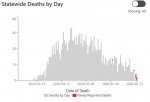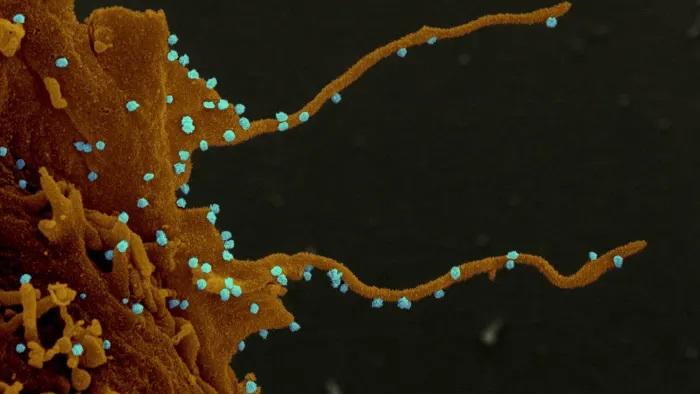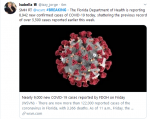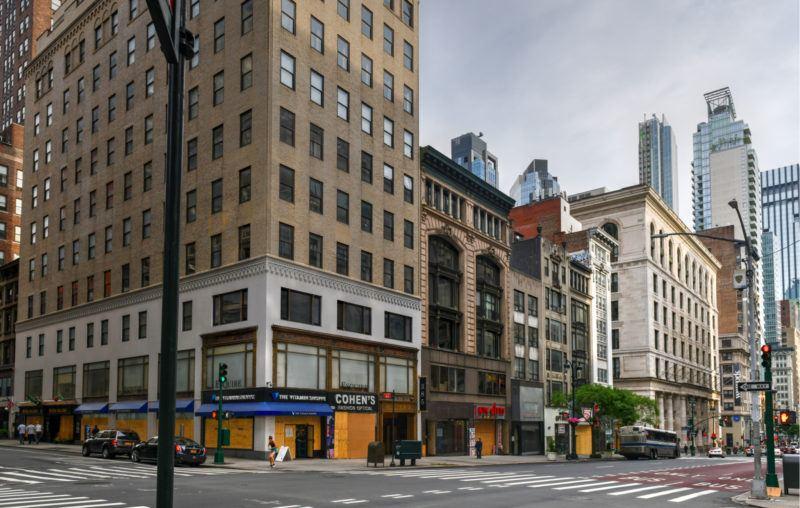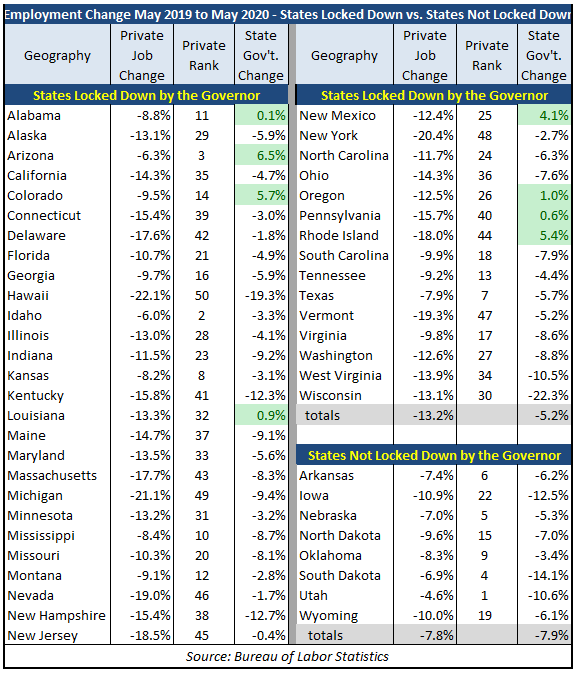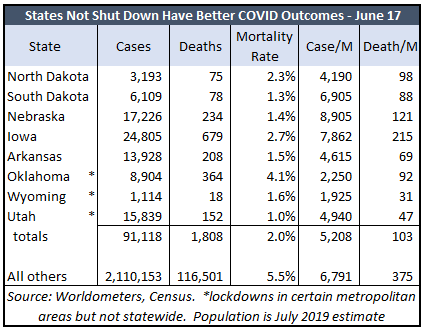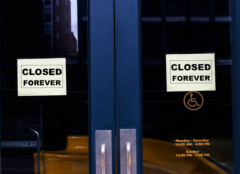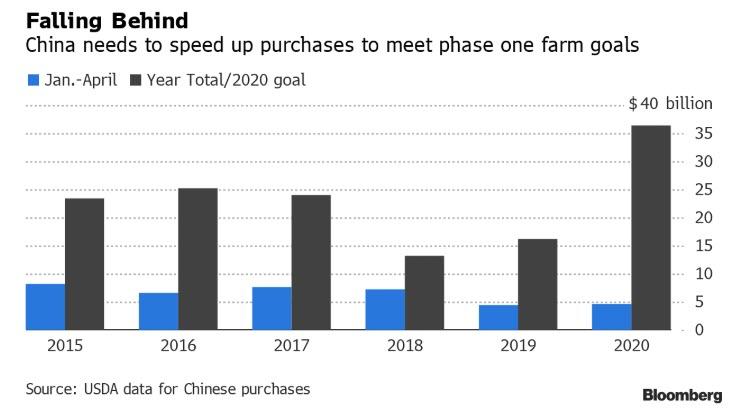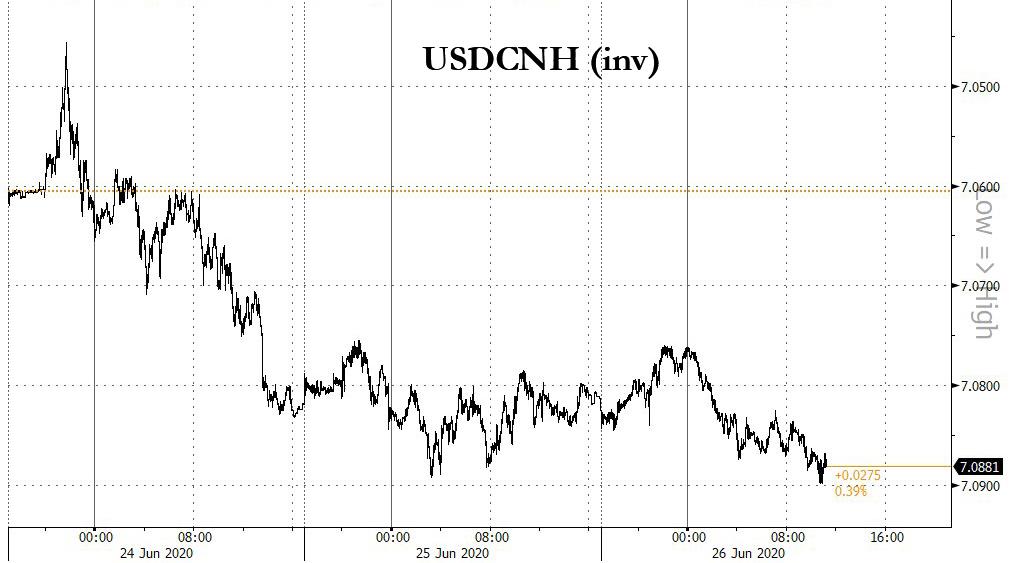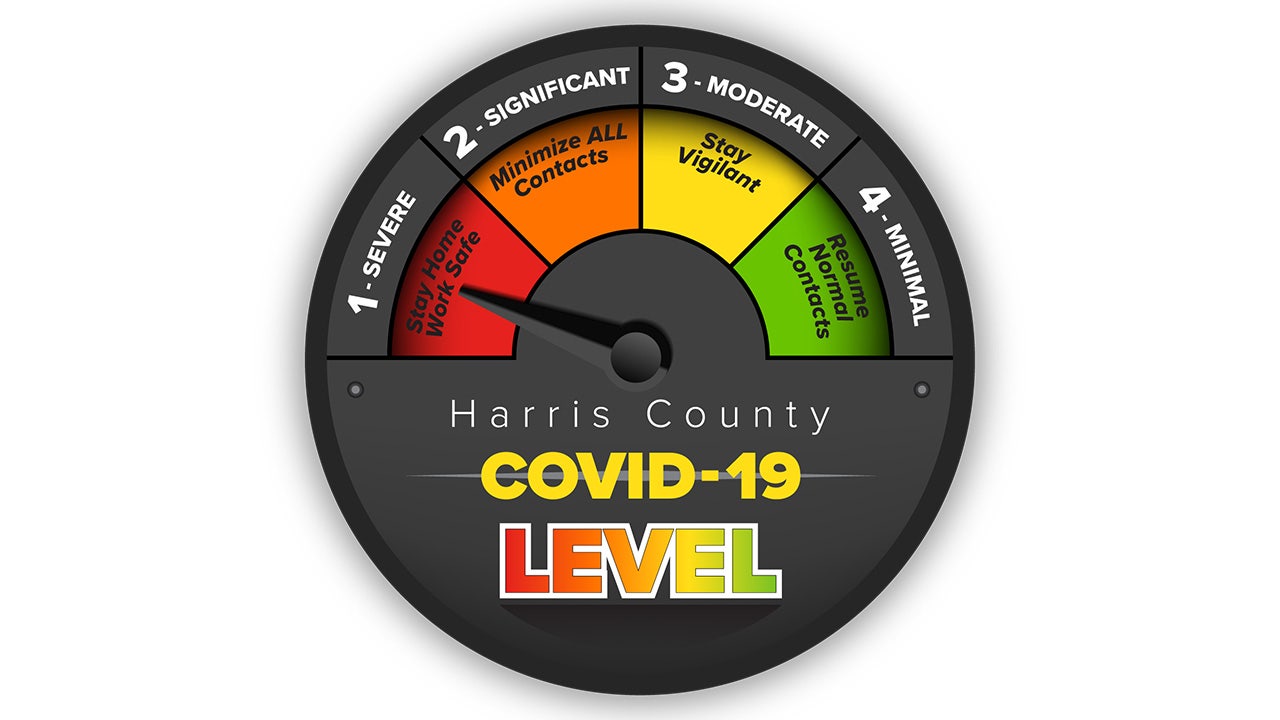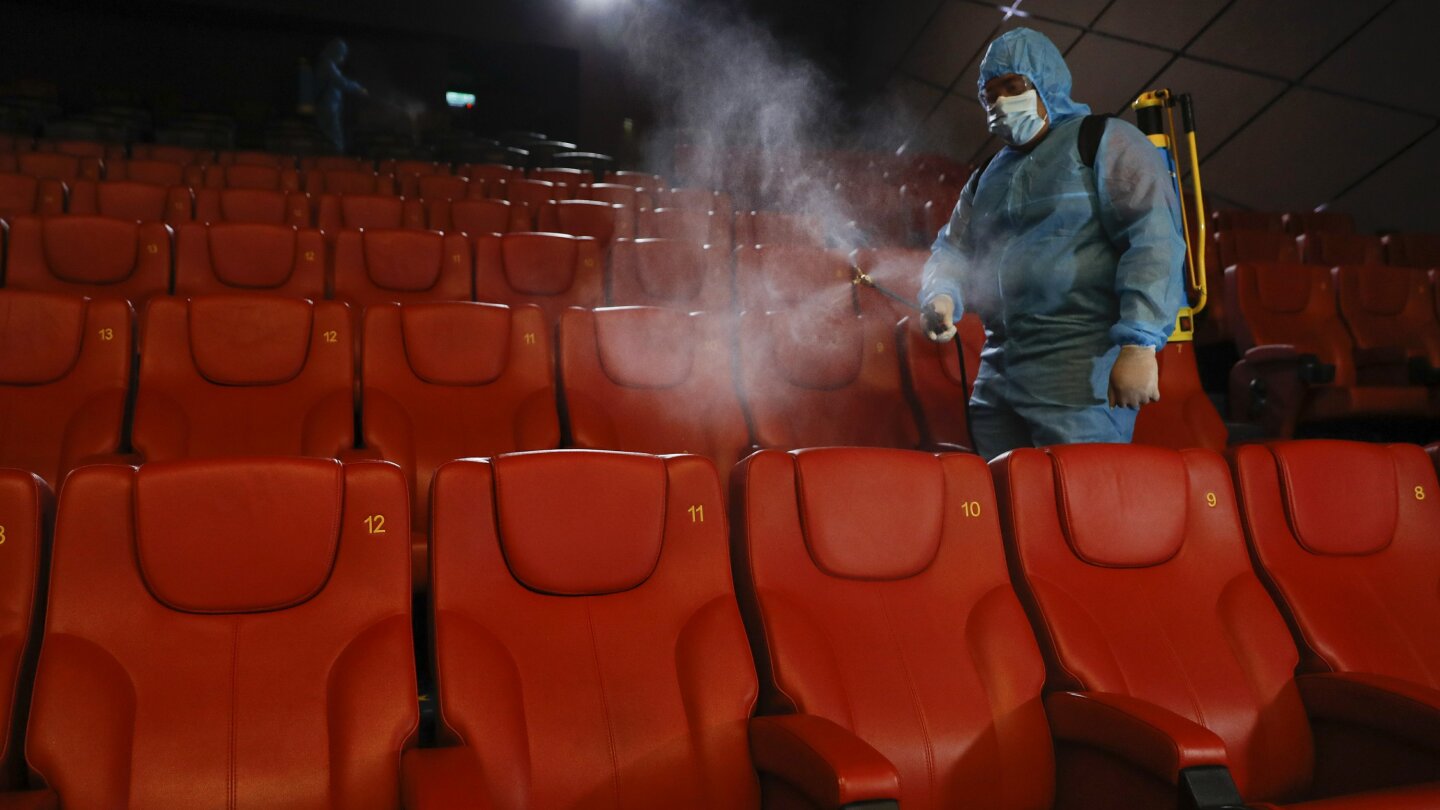Americans are living through a split-screen pandemic: Their leaders are relaxing...

www.newstimes.com
(fair use applies)
Reopenings, record cases and full hospitals: America's dissonant response to the pandemic
Reis Thebault and Abigail Hauslohner, The Washington Post
Published 9:11 pm EDT, Friday, June 26, 2020
Americans are living through a split-screen pandemic: Their leaders are relaxing restrictions while their states set records for new coronavirus infections. Churches, beaches and bars are filling up, and so are hospital beds.
Early in the outbreak, President Donald Trump told governors they were on their own - for testing, medical supplies and stay-at-home orders. Now, in this new phase of soaring cases and reopenings, the effects of this decentralized decision-making are particularly noticeable and subject to politics, with some states making seemingly arbitrary decisions.
Experts note a troubling lack of consistent, unified messaging from Trump and Vice President Mike Pence, who have downplayed the danger and denigrated effective disease defenses such as mask-wearing, testing and social distancing - even as the administration's own health officials contradict them. The coronavirus task force briefings, where health officials updated the public daily, disappeared weeks ago.
On Thursday, the country reported more than 39,000 new cases, its highest-ever single-day count, according to data gathered and analyzed by The Washington Post. The counties home to Dallas, Phoenix and Tampa all reported record-high averages on at least 15 straight days in June.
In many places, the number of people sick enough to be hospitalized has also increased sharply. Those hardest hit include the largest states - California, Texas, Florida - and those that thought they had the virus under control, like Utah and Oregon.
"I think the politicians are in denial," said Kami Kim, director of the Division of Infectious Disease and International Medicine at the University of South Florida.
The push to reopen quickly even as cases climb sends a dangerous and inaccurate message, said Andrew Pavia, the chief of the Division of Pediatric Infectious Diseases at University of Utah Health.
"On the one hand, you get messages from politicians and the business community that we have to go, go, go and open up," he said. "On the other hand, you're seeing epidemiological indicators that we still have to be very careful."
"It's cognitive dissonance," he added.
- - -
The Trump administration has sought to downplay the rising numbers. Pence called concerns about another surge of infections "overblown," the product of media "fearmongering." Trump said testing for the virus is "overrated" and that the surge of confirmed cases only "makes us look bad."
Some governors have followed the administration's lead, blaming rising case loads on more testing. In many states, positive test rates have been rising all month, according to an analysis by Covid Act Now, a consortium of doctors and researchers. If the spikes were solely due to increased testing, and not the actual spread of disease, positive rates would plateau or decline.
Testifying before a congressional committee this week, Anthony Fauci, the nation's top infectious-diseases expert, said the new cases were "a disturbing surge" spurred by community transmission rather than testing.
"That's something I'm really quite concerned about," Fauci said. "A couple of days ago, there were 30,000 new infections. That's very disturbing to me."
And even more worrisome: Several states - Arizona, Arkansas, the Carolinas, Mississippi, Tennessee, Texas and Utah - have recently reported new highs in the number of coronavirus patients hospitalized.
"We're seeing a 40 percent increase in the last two weeks in hospitalizations," said Dallas County Judge Clay Jenkins, a Democrat, the jurisdiction's top elected official. "We're by far at our record numbers, and we're at record numbers in north Texas. Houston is at a record, the state is at a record." The Texas Medical Center in Houston, a massive medical complex, reported Thursday that 100 percent of the beds in its intensive care unit are occupied.
As the virus has spread across Florida, "it has gotten pretty catastrophic for people's livelihoods," Kim said. The doctor, who works out of Tampa General Hospital in Hillsborough County, said she has noticed a disconcerting number of new infections among her colleagues.
"It's not from the hospital," she said. "It's community-acquired infection."
Pence told Republican senators on Wednesday to focus on "encouraging signs," including a death rate that has declined dramatically in past weeks. He attributed that to increased testing that is identifying younger and healthier people with the virus. Others point to better intervention at elder care facilities. Experts caution that the recent spikes in infection and hospitalization could still result in increased deaths in a few weeks.
The true picture may be even worse than indicated by state health department websites. Several states have been accused of manipulating data to make things look better than they are. In Georgia, one of the first states to lift restrictions, officials published a chart claiming to show cases declining over time - however, the data were arranged in descending order, not chronologically.
In Florida, the staffer who built the state's coronavirus dashboard claims she was fired for refusing to comply with orders to tamper with the numbers. On Tuesday, the former employee, Rebekah Jones, accused the health department of instructing staffers to "change the numbers and begin slowly deleting deaths and cases so it looks like Florida is improving next week in the lead-up to July 4."
Jones, who has taken the moniker #Insubordinate #scientist on Twitter, said in an interview that "things are obviously getting a lot worse real quickly." The state's numbers are increasingly unreliable, she said.
"A lot of people are going to die that don't have to, that shouldn't have had to," Jones said.
State officials did not respond to a request for comment on Jones's claims.
- - -
In states red and blue, the urge to reopen in the face of spiking cases has led to a political and public health tug-of-war - and an often incoherent approach to containing the virus.
In Texas, one of the first states to ease restrictions, hospitalizations have doubled since Memorial Day. Local leaders urged Gov. Greg Abbott, a Republican and a Trump ally, to take a more cautious tack. Last week, he appeared to acquiesce, saying he would allow city and county officials to enact their own mask regulations.
Jenkins, the judge, who criticized the governor's reopening plan as "too aggressive," welcomed the decision.
"The reality is: Words matter," he said. "And when you tell people, 'You can wear a mask, but it's up to you. Do whatever you want to do, you're Texans,' when that's your message, it leads to less compliance and it leads to this damage to public health and the economy."
Abbott on Tuesday urged people to stay home, and the state has suspended liquor licenses for several bars that flouted social distancing guidelines. On Thursday, he announced that Texas would "pause any further phases to open" to respond to the surge in cases and hospitalizations.
California Gov. Gavin Newsom, a Democrat, issued a more explicit order last week, requiring residents to wear face coverings in public. The mandate came as some counties reopened more businesses, including nail salons and tattoo parlors.
"Simply put, we are seeing too many people with faces uncovered - putting at risk the real progress we have made in fighting the disease," Newsom said.
Utah Gov. Gary Herbert, a Republican, moved most of the state into the "low-risk" phase of its reopening in mid-May. More infections were reported over the next month than had been seen since the outbreak's onset 70 days before, when the state confirmed its first case.
The state's death rate remains among the lowest in the nation, but its number of hospitalized patients has never been higher. Some facilities have filled their dedicated coronavirus units with people newly infected and are now housing the sick in overflow areas, said Pavia, who works at two hospitals in Salt Lake City.
"The message of opening up has been that it's low risk," he said, "and that message has backfired on us."
Herbert authorized nine counties to move into the state's "new normal" phase of larger gatherings and few restrictions on June 18. The next day, state epidemiologist Angela Dunn sent a memo with a dire warning to the team leading Utah's emergency response.
"We are quickly getting to a point where the only viable option to manage spread and deaths will be a complete shutdown," Dunn wrote. "This might be our last chance for course correction."
The memo, obtained by The Post, urges leaders to mandate face coverings and to move the state back in its reopening to the "orange phase," the second strictest.
"If above isn't reasonable, we need to be clear with public about why decisions are being made lessening restrictions - economic, not health," Dunn wrote. "Be clear about health risk. Be clear about how these decisions are made and who makes them."
Other governors already have slowed the reopenings intended to repair economies. In Louisiana, Gov. John Bel Edwards, a Democrat, announced that the state would keep current restrictions in place for another month. North Carolina Gov. Roy Cooper, a Democrat, said his state is holding in place for another three weeks.
In Oregon, soaring numbers prompted Gov. Kate Brown, a Democrat, to "press pause" on phased reopening. Last week, she allowed localities to resume their restarts but announced face mask requirements for seven counties.
More than 200 cases there were linked to a Pentecostal church in the state's rural northeast, where local media reported that religious services had flouted restrictions on gatherings. Union County, where the church is located, agreed to reverse course from Phase 2 back to Phase 1.
"I think the bottom line is that we don't really know what's coming," said Jeffrey Bethel, an epidemiology professor at Oregon State University. "This is day-by-day, week-by-week constant reevaluation in terms of where we are in rate of new cases and rate of new hospitalizations. We really need to proceed in that cautious way."
- - -
All these fits and starts of reopening have confused and frustrated residents and business owners and sown skepticism about the virus's danger.
Michele Penrod, who owns a popular bar in Fort Lauderdale, Fla., views the remaining restrictions as a political maneuver "to ruin the economy to hurt Trump." If officials were genuinely concerned about the spread of the virus, she argued, the restrictions wouldn't be so infuriatingly inconsistent.
In the South Florida beach city, businesses that serve food can reopen, while bars that serve only alcohol - like Penrod's business, the Elbo Room - must remain closed. She said other establishments have taken advantage of the rules.
"Why can't I reopen? 'Cause I don't have french fries," she said. "We've got a restaurant right next door that's normally upscale dining, and it's just turned into a bar. If you order an appetizer, you can sit there and drink all day."
"There's even one of those ax-throwing bars, and they're allowed to be open - because they sell chicken fingers," she added. "Some of the swinger bars are open - and how are they social distancing there?"
Meanwhile, Penrod said, her business has suffered serious financial losses, and her 50 staff members are struggling. Many depend on tips, and she said they haven't received the stimulus or unemployment checks they were promised.
"It's not fair," she said.
Social distancing has declined steadily since April, when more than 90 percent of U.S. adults said they were taking the precaution, according to a Gallup daily survey. The country's partisan debate between personal liberty versus community good has leached into distancing, masking and staying home. Democrats are far more likely to follow those guidelines than Republicans, the pollster found.
In some of California's most conservative locales, like Riverside County, vocal groups of residents have vociferously opposed restrictions for weeks, even as new cases have been increasing steadily.
In early April, the county's public health officer issued an order that went beyond what the state required at the time, banning gatherings and requiring masks. But by May, residents were fed up. The sheriff said publicly that he would refuse to enforce the restrictions, and the county board of supervisors floated a measure to repeal them. Hundreds attended back-to-back meetings to debate the proposal in occasionally caustic testimony that lasted for more than 15 hours.
One woman said the stay-at-home order was "tyrannical." Another said she would "rather die of a virus than lose my freedoms." In the end, the five supervisors - two of whom were not wearing masks - voted unanimously to overturn the local health order for the inland southern county's 2.1 million residents.
"Since then, we've seen a doubling in cases and deaths," said Brandon Brown, an epidemiologist at the University of California at Riverside. "These stricter restrictions are what kept us having low cases and deaths in the county. . . . These are the things that are saving lives."
Communities in and around the Coachella Valley now have a disproportionate share of cases and deaths.
"If we keep seeing increases, we will need to start this stuff over, we will need to go back to sheltering in place," Brown added.
Last week, as Newsom's order effectively reinstated the mask requirement, a record number of people were hospitalized in Riverside County.
- - -
Faced with a growing number of sick people seeking hospital care in his state, Arizona Gov. Doug Ducey also altered his stance on face coverings. The Republican had long opposed a mask mandate, but last week he issued an executive order allowing local governments to make that decision themselves.
"There is an indication that we are not out of the woods," Ducey said while announcing the order. "There is a trend, and the trend is heading in the wrong direction."
The pressure had been mounting for weeks.
Since Memorial Day, two weeks after Ducey let his stay-at-home order expire, Arizona has become a national coronavirus hot spot. In that time, the state's seven-day average of newly reported cases nearly quadrupled.
The surge has also brought a troubling boom in hospitalizations. Banner Health, the state's largest provider, warned that its ICUs were "very busy caring for the sickest of the sick" and that its number of ventilated covid-19 patients ballooned from 27 to 117 in less than a month. In mid-June, researchers at Arizona State University predicted that if conditions didn't change, the state could run out of hospital beds by the end of the month.
They concluded that the data shows "a very concerning public health trend."
Maricopa County, the state's largest, has been hardest hit, and health officials there have tied the new cases to its reopening. But there are worrying signs for other parts of the state, too. In Yuma County, where nearly a quarter of the population is now unemployed, the average of new cases has nearly tripled since May. Trump visited both counties on Tuesday and hosted a rally in Phoenix that drew thousands indoors, angering local doctors.
"We do have a serious problem and serious community spread," said Amanda Aguirre, a former state lawmaker and president of the Regional Center for Border Health, a nonprofit health provider in Yuma County.
Aguirre said that her organization does most of the area's testing and that it's still not enough. A lack of coordination at every level of government has left the county short on supplies and testing kits, she said - problems made worse by the state's reopening.
"Yuma is going to be one of the worst hot spots if we don't test and control this," Aguirre said.
"I've been feeling like Don Quixote," she added, comparing herself to Miguel de Cervantes's protagonist who tilted at windmills. "Fighting something and I just don't know how to fight it."
.

